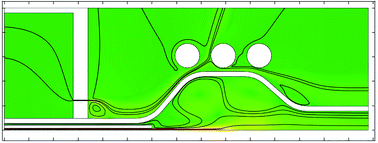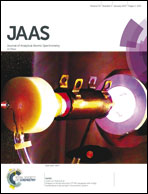Computational model of inductively coupled plasma sources in comparison to experimental data for different torch designs and plasma conditions. Part II: theoretical model†
Abstract
This computational study present a LTE-based model (LTE: local thermodynamic equilibrium) and a two-temperature model of an inductively coupled plasma (ICP) operated in a standard Fassel-type torch. In addition, a computational model for a low-argon-flow torch, which consumes only 0.6 L min−1 of Ar, is presented for the first time. The latter is a special modification of the ICP torch, where the Ar cooling gas stream is replaced by an outer stream of compressed air. The two models include a comprehensive simulation of torch wall temperature as well as tangential Ar flow inside the torches. It can also be applied to other new geometries of ICP torches. Plasma properties in both torches are simulated over a wide range of operational parameters. The models are validated by comparing the simulated electrical and internal ICP properties to experimental data.

- This article is part of the themed collection: 2016 Winter Conference on Plasma Spectrochemistry


 Please wait while we load your content...
Please wait while we load your content...